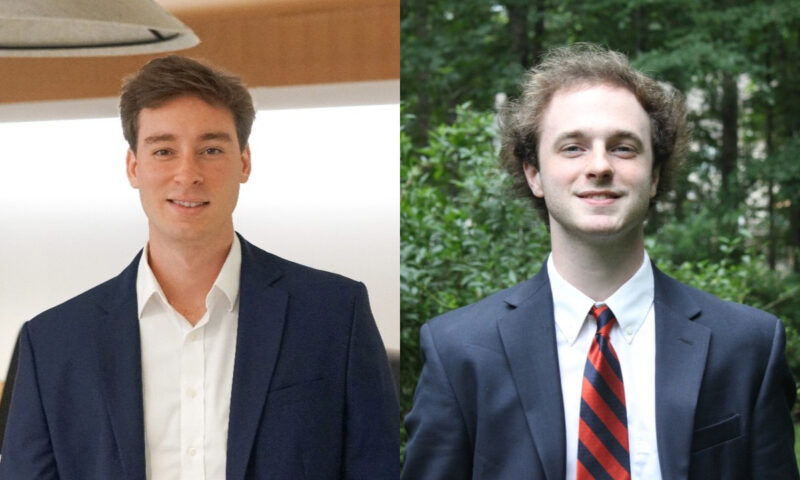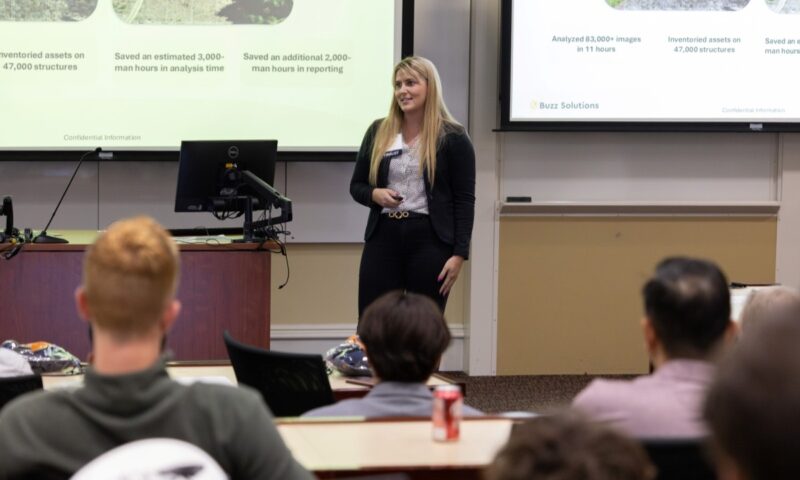By Kristine Hojnicki
 In the world of architecture and real estate development, certain individuals transcend the role of mere designers; they shape the future of the built environment. One such example is distinguished UVA alumnus Andrew Gutowski (Architecture ’75). Gutowski’s expansive career, spanning continents and decades, serves as a testament to the virtues of adaptability, innovation, and the transformative power of education.
In the world of architecture and real estate development, certain individuals transcend the role of mere designers; they shape the future of the built environment. One such example is distinguished UVA alumnus Andrew Gutowski (Architecture ’75). Gutowski’s expansive career, spanning continents and decades, serves as a testament to the virtues of adaptability, innovation, and the transformative power of education.
Gutowski’s journey into real estate is marked by his remarkable adaptability and a relentless pursuit of excellence. That quest began during his time on Grounds, which helped to shape him into the professional he would eventually become.
“My experience at UVA kick-started my love of historic architecture. It fine-tuned my appreciation and understanding of working with real estate properties or in locations that have political or historical context,” he says. “UVA students also place an emphasis on character and honesty, and those characteristics stayed with me throughout my career.”
Gutowski’s interest in historical architecture would come into play later in his career, when he reimagined development projects in historic Warsaw, Poland. But years earlier, the young college graduate moved to Boston to begin his career at an architectural firm.
It didn’t take long for his talent to shine through, and he quickly ascended to a prominent position. It was during this time that he had a pivotal realization: Many critical design decisions were often made before architects got involved.
“It occurred to me that with my design skills, I could work better if I was engaged earlier in the real estate process as a developer, as opposed to being reactionary as an architect and having to fix bad decisions that were made in the early stages of a project,” he explains.
The realization prompted him in the mid-1980s to pursue a master’s degree in real estate development from MIT, where he acquired the necessary skills and knowledge for this ambitious transition. Armed with a unique blend of architectural expertise and a developer’s perspective, Gutowski embarked on a new phase of his career overseas.
A Global Perspective
 Growing up, Gutowski’s vividly remembers his father’s complaints about the subpar hotels he would stay in when he went to Poland on business trips. So, when the opportunity came to bid on a development project involving the reconstruction of an 18th century palace that was destroyed in downtown Warsaw during World War II, he seized it.
Growing up, Gutowski’s vividly remembers his father’s complaints about the subpar hotels he would stay in when he went to Poland on business trips. So, when the opportunity came to bid on a development project involving the reconstruction of an 18th century palace that was destroyed in downtown Warsaw during World War II, he seized it.
“My father was Polish and fluent in the language, so he helped me to develop local knowledge and local relationships that were critical to my success there,” he says.
Gutowski’s plan relied upon Varsovian support for the project, especially as his design was incredibly unconventional for the time. Instead of rebuilding the palace in its entirety, Gutowski’s proposal was to reconstruct only the front of the building and then build a Sheraton hotel behind it.
“This was unheard of at the time in Europe,” he says. “Anything historical that was rebuilt meant that you built back everything. There was no approach to recreate a portion of something historical and then mix in modern uses.”
Ultimately, Gutowski’s team came in second in the bidding process. However, the winning team adopted his innovative idea, rebuilding the historical façade and constructing a bank behind it.
“This got people talking about how to reimagine downtown and what this project meant to bring life back to this part of the city. It promoted a conversation in the community about real estate and historical heritage,” he says. “When I came back to America, I had these skills in my toolbox and was able to use them as I reentered the American workforce and reengaged with past connections.”
Shaping the Built Environment
Transforming urban areas into vibrant living spaces became the crux of Gutowski’s work when he returned stateside; his work in Washington, DC, stands as a testament to his commitment to positively reshaping the built environment.
“The city was very early in promoting this idea of people working, living, and playing in the same area downtown. I worked with developers and architects to implement the political decisions that were made around this,” he says.
This cultural shift is evident in the buildings that now define the city’s landscape. Gutowski’s involvement in mixed-use projects and residential developments created spaces that not only accommodated modern living, but also respected and complemented the city’s historical context.
Gutowski’s portfolio grew to include projects in Northern Virginia as well as in the DC metro area. While those developments span a diverse range of types, he has an affinity for mixed-use residential projects because they are known for their complexity, demanding meticulous planning and execution: “There are so many pieces. The permitting is hard, the design is hard, the construction is hard—I just love the challenge of that type of project.”
Also enthusiastic about the hospitality industry, where speed and innovation are the norm, Gutowski notes that hotel projects, in particular, stand out for their rapid progression and innovative designs. “Anytime you take a hotel room and redesign it, it’s money that is not being made. The process to turn over a room is fast and complicated, but hospitality professionals are typically happy and supportive of renovation projects, which makes for a much nicer working relationship,” he says.
The Next Generation
Looking ahead, Gutowski is excited about the challenge of balancing sustainability with design excellence. While sustainability is undoubtedly crucial in addressing global environmental concerns, he warns against neglecting the equally vital aspect of good design. He pointed to a trend in Scandinavia, where there is a growing preference for more contextual and traditional construction over sleek, modern, sustainable architecture. This shift in architectural preferences highlights the dynamic nature of design and the evolving tastes of society.
But that is just one unprecedented change students must be prepared to face when they enter the field. Gutowski believes that the COVID-19 pandemic and its associated economic and cultural shifts have shaken the real estate sector to its core. The traditional office space, once a cornerstone of urban life, now faces uncertainty, as remote work reshapes the way people approach their professional lives. Downtown areas, once bustling with activity, now grapple with empty buildings and reduced foot traffic. These monumental differences pose significant challenges that the next generation of real estate professionals will need to navigate.
“They will have to come up with the answers to the problems that came out of the pandemic,” he says. “I predict that these issues will be with us, unfortunately, for a long time.”
But great challenges also bring great opportunities, and Gutowski encourages students to embrace the transformative power of international exposure and working overseas: “I would describe working abroad as going from Earth to the universe. I learned so much, and it changed my viewpoint on how to work with people. It makes you a better businessperson.”
As Gutowski’s journey exemplifies, the real estate industry is not limited by geographical boundaries. In an interconnected world, the ability to work across borders and collaborate with individuals from diverse backgrounds is not only a valuable asset; it can often benefit stakeholders across society. Gutowski’s experiences serve as a reminder that success in the real estate and architecture industries is not confined to a single path. Instead, it is enriched by exploration, adaptability, and a willingness to embrace new challenges and perspectives, wherever they can be discovered.


